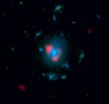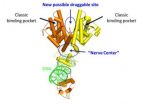(Press-News.org) Results from the Fluid Expansion as Supportive Therapy (FEAST) trial in East Africa show that children who are given fluid to treat shock have an increased risk of death due to cardiovascular collapse at 48 hours. These findings in BioMed Central's open access journal BMC Medicine challenge the generally held idea that early and rapid reversal of shock by fluid resuscitation translates into longer-term survival benefits.
The FEAST trial was conducted in six African hospitals across Kenya, Tanzania and Uganda without intensive care facilities. It included 3000 children with shock caused by conditions including sepsis and malaria but excluded children with gastroenteritis, burns, who had undergone surgery or had severe malnutrition. All the children in the trial received standard treatments, depending on their illness including antibiotics, antimalarials, anticonvulsants, glucose or whole blood if anemic, but were randomly assigned to receiving fluid resuscitation or to a control group without fluid resuscitation.
Prof Kathryn Maitland, from the Wellcome Trust Centre for Clinical Tropical Medicine at Imperial College London, who led this study explained, "The children who were given this treatment (boluses) initially responded well compared to the control group. However, this did not translate into a better recovery at 48 hours - more children died in the group receiving boluses. The main cause of death, rather than fluid overload, was cardiovascular collapse."
This is surprising given that this treatment is standard practice elsewhere. The research team involved in this trial believe that in settings where there is a lack of intensive care facilities 'standard' procedures, such as fluid resuscitation, should not necessarily be used, especially when they have not been properly tested in clinical trials.
Commenting on this study Prof John Myburgh, from the University of New South Wales and The George Institute for Global Health, takes this one stage further and recommends that fluid resuscitation should be used with the same care as any potentially lethal drug, "Studies are beginning to show cracks in fluid resuscitation therapy and that careful monitoring is needed as well as a better understanding of dose and the way the therapy is given. The compelling results of this study from Africa question the wisdom of fluid bolus as therapy not only in pediatric patients but also in all critically ill patients."
This article marks the launch of an article collection on Medicine for Global Health in BMC Medicine. The collection will focus on public health initiatives, the development of health care policies, management of infectious and non-communicable diseases, cost-effectiveness studies and evidence-based guidelines which are needed to address the global burden of disease.
###
Media contact
Dr Hilary Glover
Scientific Press Officer, BioMed Central
Tel: +44 (0) 20 3192 2370
Mob: +44 (0) 778 698 1967
Email: hilary.glover@biomedcentral.com
Notes
1. Exploring mechanisms of excess mortality with early fluid resuscitation: insights from the FEAST trial
Kathryn Maitland, Elizabeth C George, Jennifer A Evans, Sarah Kiguli, Peter Olupot-Olupot, Samuel O Akech, Robert O Opoka, Charles Engoru, Richard Nyeko, George Mtove, Hugh Reyburn, Bernadette Brent, Julius Nteziyaremye, Ayub Mpoya, Natalie Prevatt, Cornelius M Dambisya, Daniel Semakula, Ahmed Dungu, Vincent Okunny, Ronald Wokulira, Molline Timbwa, Benedict Otii, Michael Levin, Jane Crawley, Abdel G Babiker, Diana M Gibb and FEAST trial group
BMC Medicine 2013, 11:68 doi:10.1186/1741-7015-11-68
Commentary
Causes of death after fluid bolus resuscitation: new insights from FEAST
John Myburgh and Simon Finfer
BMC Medicine 2013, 11:67 doi:10.1186/1741-7015-11-67
Please name the journal in any story you write. If you are writing for the web, please link to the article. All articles are available free of charge, according to BioMed Central's open access policy.
Article citation and URL available on request on the day of publication.
2. BMC Medicine is the flagship medical journal of the BMC series, publishing original research, commentaries and reviews that are either of significant interest to all areas of medicine and clinical practice, or provide key translational or clinical advances in a specific field. @BMCMedicine
3. BioMed Central (http://www.biomedcentral.com/) is an STM (Science, Technology and Medicine) publisher which has pioneered the open access publishing model. All peer-reviewed research articles published by BioMed Central are made immediately and freely accessible online, and are licensed to allow redistribution and reuse. BioMed Central is part of Springer Science+Business Media, a leading global publisher in the STM sector. @BioMedCentral
4. The article collection Medicine for Global Health in BMC Medicine can be found here http://www.biomedcentral.com/bmcmed/series/medicine_for_global_health
5. The FEAST trial was funded by the Medical Research Council (provided through the MRC DFID concordat). The Medical Research Council has been at the forefront of scientific discovery to improve human health. Founded in 1913 to tackle tuberculosis, the MRC now invests taxpayers' money in some of the best medical research in the world across every area of health. Twenty-nine MRC-funded researchers have won Nobel prizes in a wide range of disciplines, and MRC scientists have been behind such diverse discoveries as vitamins, the structure of DNA and the link between smoking and cancer, as well as achievements such as pioneering the use of randomized controlled trials, the invention of MRI scanning, and the development of a group of antibodies used in the making of some of the most successful drugs ever developed. Today, MRC-funded scientists tackle some of the greatest health problems facing humanity in the 21st century, from the rising tide of chronic diseases associated with ageing to the threats posed by rapidly mutating micro-organisms. http://www.mrc.ac.uk
Shock treatment can kill -- Clinical trial shows how 'standard' procedure results in children's deaths
2013-03-14
ELSE PRESS RELEASES FROM THIS DATE:
Tapeworm DNA contains drug weak spots
2013-03-14
For the first time, researchers have mapped the genomes of tapeworms to reveal potential drug targets on which existing drugs could act. The genomes provide a new resource that offers faster ways to develop urgently needed and effective treatments for these debilitating diseases.
Tapeworms cause two of the World Health Organization's 17 neglected tropical diseases; echinococcosis and cysticercosis. The team sequenced the genomes of four species of tapeworm to explore the genetics and underlying biology of this unusual parasite. As an adult it can live relatively harmlessly ...
Computer models predict how patients will respond to HIV drugs
2013-03-14
Results of a study published online in the Journal of Antimicrobial Chemotherapy today (Thursday), demonstrate that computer models can predict how HIV patients whose drug therapy is failing will respond to a new treatment. Crucially for patients in poorer countries, the models do not require the results of expensive drug resistance tests to make their predictions. The study also showed that the models were able to identify alternative drug combinations that were predicted to work in cases where the treatment used in the clinic had failed, suggesting that their use could ...
Drug treatment corrects autism symptoms in mouse model
2013-03-14
Autism results from abnormal cell communication. Testing a new theory, researchers at the University of California, San Diego School of Medicine have used a newly discovered function of an old drug to restore cell communications in a mouse model of autism, reversing symptoms of the devastating disorder.
The findings are published in the March 13, 2013 issue of the journal PLOS ONE.
"Our (cell danger) theory suggests that autism happens because cells get stuck in a defensive metabolic mode and fail to talk to each other normally, which can interfere with brain development ...
ALMA exposes hidden star factories in the early universe
2013-03-14
Some of the brightest galaxies in the universe – infant galaxies that churned out tens of thousands of stars each year at the dawn of the universe – evolved much sooner and in greater numbers than previously thought, according to new measurements obtained by University of Arizona astronomers.
The results are published in a set of papers to appear in the journal Nature on March 14 and in the Astrophysical Journal. The research is the most recent example of the discoveries coming from the new international ALMA observatory, which celebrates its inauguration today. ALMA, ...
Molecule's structure reveals new therapeutic opportunities for rare diabetes
2013-03-14
ORLANDO, Fla., March 13, 2013 – Researchers at Sanford-Burnham Medical Research Institute (Sanford-Burnham) have determined the complete three-dimensional structure of a protein called HNF-4α. HNF-4α controls gene expression in the liver and pancreas, switching genes on or off as needed. People with mature onset diabetes of the young (MODY1), a rare form of the disease, have inherited mutations in the HNF-4α protein. This first-ever look at HNF-4α's full structure, published March 13 in Nature, uncovers new information about how it functions. The study ...
New monoclonal antibody developed that can target proteins inside cancer cells
2013-03-14
NEW YORK, MARCH 13, 2013 – Researchers have discovered a unique monoclonal antibody that can effectively reach inside a cancer cell, a key goal for these important anticancer agents, since most proteins that cause cancer or are associated with cancer are buried inside cancer cells. Scientists from Memorial Sloan-Kettering Cancer Center and Eureka Therapeutics have collaborated to create the new human monoclonal antibody, which targets a protein associated with many types of cancer and is of great interest to cancer researchers.
Unlike other human therapeutic monoclonal ...
'Nuisance' data lead to surprising star-birth discovery
2013-03-14
When a batch of bright cosmic objects first appeared in maps in 2008 made with data from the South Pole Telescope, astronomers at the University of Chicago's Kavli Institute for Cosmological Physics regarded it only as an unavoidable nuisance.
The light sources interfered with efforts to measure more precisely the cosmic microwave background—the afterglow of the big bang. But the astronomers soon realized that they had made a rare find in South Pole Telescope's large survey of the sky. The spectra of some of the bright objects, which is the rainbow of light they emit, ...
Carnivores, livestock and people manage to share same space study finds
2013-03-14
In the southern Rift Valley of Kenya, the Maasai people, their livestock and a range of carnivores, including striped hyenas, spotted hyenas, lions and bat-eared foxes, are coexisting fairly happily according to a team of coupled human and natural systems researchers.
"I wouldn't call the results surprising," said Meredith Evans Wagner, a visiting scholar from the University of Florida in the Center for Systems Integration and Sustainability (CSIS) at Michigan State University and part of the research team. "Other research has shown that people and carnivores can coexist, ...
Bursts of star formation in the early universe
2013-03-14
PASADENA, Calif.—Galaxies have been experiencing vigorous bursts of star formation from much earlier in cosmic history than previously thought, according to new observations by a Caltech-led team.
These so-called starburst galaxies produce stars at a prodigious rate—creating the equivalent of a thousand new suns per year. Now the astronomers have found starbursts that were churning out stars when the universe was just a billion years old. Previously, astronomers didn't know whether galaxies could form stars at such high rates so early in time.
The discovery enables ...
1 in 4 colonoscopies in Medicare patients found to be potentially inappropriate
2013-03-14
Colonoscopy is one of the most effective cancer screening procedures available. Colon cancer grows very slowly and can be treated if caught early through screening. But, perhaps because of this success, older Americans are undergoing screening colonoscopies despite recommendations against screening in adults aged 76 and older.
A new study by researchers at the University of Texas Medical Branch at Galveston published online today in JAMA Internal Medicine shows that one out of four colonoscopies paid for by Medicare is potentially inappropriate under current screening ...




